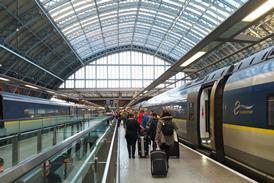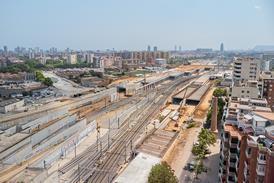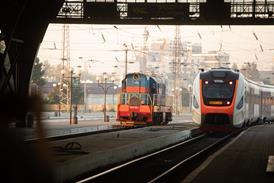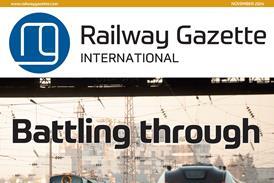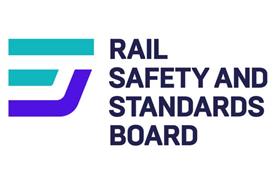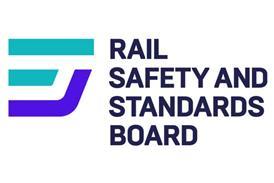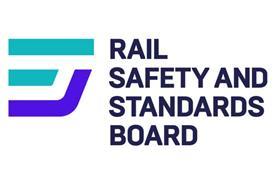INTRO: Murray Hughes reports from the 160 km/h rail link serving Europe’s busiest airport
BRITAIN’S Prime Minister Tony Blair inaugurated the Heathrow Express service between London Paddington and Heathrow airport on June 23. Riding the 10.10 from Paddington, he was accompanied by Deputy Prime Minister and Secretary of State for Environment, Transport & the Regions John Prescott. Operated by airports authority BAA, Heathrow Express trains leave Paddington at 15min intervals from 05.10 to 23.40, taking just 15min to Heathrow Central serving Terminals 1, 2 and 3, and 5min more to Terminal 4.
On Sunday June 28 Heathrow Express carried over 19000 people, nearly twice the average of 10000 trips a day. Heathrow’s other rail link, London Underground’s Piccadilly line, was out of action because a crane had fallen across the track.
The 14-strong fleet of trains built by Siemens-CAF has been well received, with passengers appreciating the purpose-built design with luggage stacks by each door. Check-in for passengers with only hand luggage is now available at Paddington, and from mid-1999 there will be 27 desks for those with checked baggage.
Paul LeBlond, BAA’s Rail Strategy Manager, forecasts around 6 million trips for the first full year of operation, or 16500 passengers a day. He expects traffic to remain static until after the summer, when business travel picks up again. From the end of July, the four-car sets have started to run in pairs, as the single sets were well-loaded at peak periods.
BAA sees the £450m HEx as a vital part of its strategy to develop public transport access to the airport, which is handling 58 million passengers a year. Next step will be to reinstate a dedicated bus shuttle from Feltham, where Railtrack is spending £3m on a new station building to provide a seamless interchange. BAA is providing £1m towards the cost of the bus, which will be run by London Transport: every 10min to Terminals 1, 2 and 3 and every 15min to Terminal 4. The government is contributing £1·5m for local authorities to provide bus priority on roads between Feltham Gateway station and the airport. In LeBlond’s view, ’it is a good partnership deal’, which should be up and running next year.
St Pancras link
BAA has a clear strategic aim of getting 50% of airline passengers to the airport by public transport. Next major change is likely to be the launch in 2001 of a Heathrow - St Pancras service. Although LeBlond says ’we have not yet made the breakthrough’, much work has been done. Railtrack has found timetable slots for a 15min interval service, which would call at West Hampstead, Ealing Broadway and Hayes & Harlington, where a major interchange would be developed. Track upgrading, 25 kV electrification and resignalling are needed over the freight-only Acton - Cricklewood section.
BAA is in the middle of what LeBlond refers to as ’difficult negotiations’ over access charges to make Railtrack’s £150m investment worthwhile. Virgin, Great Western, Thames Trains and freight company EWS also stand to gain, and discussions centre on who should contribute and how much. Another four trains would be procured - LeBlond confesses ’the present fleet is probably more than we really need now, but the spin-off is that the spare sets now available would be able to cover the St Pancras service too.’
Eurostar to the airport
Perhaps one of the most intriguing proposals began with British Airways, now a member of the consortium running Eurostar. A Paris - Heathrow Eurostar service would free up some of BA’s precious slots on the Heathrow runways for more lucrative long-haul flights; LeBlond points out that EU policy is to encourage use of rail instead of short-haul aircraft. BAA has looked at a Heathrow - Manchester service, but this has been put aside pending the upgrading of the West Coast main line.
BAA and BA have already discussed the idea of running Eurostars into Heathrow. As they are built to run through the Channel Tunnel, which like the branch is electrified at 25 kV 50Hz, there are no safety or technical problems apart from the need to fit them with ATP and to make ’minor changes to signalling equipment’ to increase capacity. The 200m platforms would not take a full-length trainset, so the proposal is to use a half-length version of the Regional Eurostars, with either two power cars or a driving trailer.
The plan also raises security questions. Both Heathrow stations are ’landside’, but a Paris-bound Eurostar would be considered by immigration and security authorities to be ’airside’. On-board inspections would be one way round this.
BA and BAA had informal discussions before BA became a Eurostar operator, and BAA is now awaiting a formal proposal. LeBlond believes ’it could happen fairly quickly’, as the relatively small amount of work needed could be completed without the need for a Transport & Works Order. ’It might even happen before the St Pancras service’, he says.
The next increase in rail capacity at Heathrow is likely to be tied to opening of the planned fifth terminal on the western side of the airport. A public enquiry is due to end in November, and a decision could be taken in 2000. Allowing five years to build, a rail link could be in place in 2004.
Studies into the opportunities for a rail link to T5 include one option to continue the line south towards Staines, so that trains from the southwest could run into the airport. Twice-hourly services would run to Woking and Guildford, to Reading via Bracknell, and to London Waterloo. For a spend of around £60m, about 3 million passengers a year could be attracted to the route. LeBlond says ’the business case looks reasonable’, and it ’has a a good head of steam behind it’.
A second proposal would be to run north beyond T5 to rejoin the Great Western main line. This is more expensive, mainly because electrification would be needed at least as far as Reading - on the assumption that diesel trains would not be allowed into the Heathrow tunnels on a regular basis. This case is less favourable as forecast traffic is only about 1 million passengers a year. The project could become more attractive if rail freight plans are included. LeBlond says land is available for an intermodal terminal, which could handle air freight currently moving by truck. o
CAPTION: Above: Joining Prime Minister Tony Blair (left) for the launch on June 23 were BAA Chief Executive Sir John Egan, Deputy Prime Minister John Prescott, and Heathrow Express Chairman Rod Hoare
CAPTION: Inset right: Airline check-in desks are provided at London Paddington station. For the moment these are only for passengers with hand luggage
CAPTION: The ATP display on the Heathrow Express EMUs is integrated with the speedometer. One driver who trained on the HEx said she would not not like to drive without ATP
Who did what
Class 332 Heathrow Express trains were built by Siemens (electrical equipment) and CAF (mechanical parts), and Siemens maintains them at Old Oak Common depot with technical support from Interfleet Technology, which advised BAA on procurement. Current collection gear is from Brecknell-Willis, auxiliary converters are by Transtechnik, fault diagnosis by Sepsa and ATP equipment by ACEC. Driver training simulators were provided by Marconi.
Brakes are from SAB Wabco, dampers were supplied by Koni, air systems by Westinghouse, air-conditioning by Stone Iberica, and gangways by Woodville Polymers. The Scharfenberg couplers were made under licence in Spain. Doors have been supplied by Faiveley with mechanisms from Bode and control software by Bemag; seats were furnished by Georg Eknes of Norway. Interior styling was by Design Triangle.
Taking the lead engineering design role for the project was consultant Mott MacDonald, which was responsible for engineering the 5·7m diameter tunnels, trackwork and the two Heathrow stations, as well as ventilation, fire safety and communications equipment. Following the collapse of a temporary tunnel lining in the central area, the firm developed a revised design that included a cofferdam 60m wide by 30m deep. This was engineered with contractor Balfour Beatty. The 12 escalators at the two airport stations were by O&K of Germany.
Concrete slab track on the 8·5 km Heathrow branch is by Tarmac. Trackwork uses rail from British Steel Track Products fastened with Pandrol clips. Electrification of 104 track-km at 25 kV 50Hz was by Spie Enertrans of France. Ticket machines at Heathrow and Paddington are able to work in seven languages and accept a range of currencies including, from next year, the euro. Supplier is Westinghouse Cubic Ltd.

